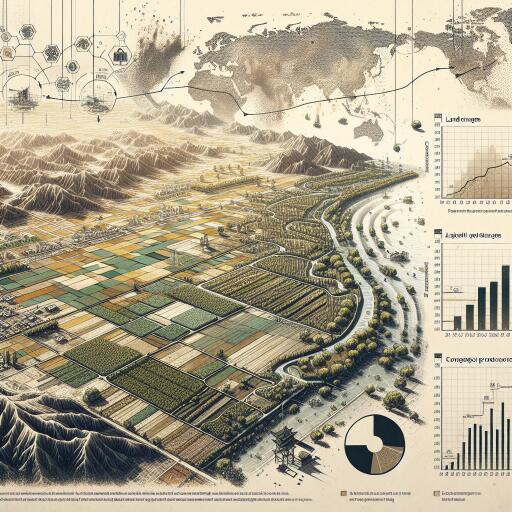
Research on the Impact of Spatial and Temporal Changes in Ecological Product Value in Hebei Province Based on Land Use Changes
In the ecological realm, the value of ecological products is significantly influenced by a mix of natural, social, economic, and ecological factors. This analysis highlights the changes in these values in Hebei Province over the years 2010, 2014, 2018, and 2022, focusing on various land use patterns.
Land Use Dynamics in Hebei Province
From 2010 to 2022, Hebei Province experienced substantial shifts in land use. The dominant categories included agricultural lands, forests, grasslands, and impervious surfaces, covering about 95% of the area. With extensive efforts in farmland development, land improvement, and ecological restoration, areas like forests, water bodies, and wetlands expanded, while others like grasslands shrank. Notably, the growth of impervious surfaces was most pronounced. This continuous transition causes shifts in regional ecological product capacity, influenced by spatial and temporal land use changes.
Dynamics of Land Use Transformation
Between 2010 and 2022, various land categories exhibited dynamic rates of change. While bare land decreased significantly, wetlands saw a sharp increase. These changes underscore how small adjustments in certain areas can lead to substantial shifts, especially when land types, like wetlands, are sensitive due to their limited original size. Over time, varying rates of transformation reflect Hebei’s shifting landscape stability and evolving land utilization efficiency.
Transformation Trends and Land Utilization
Analyzing land use transformation trends, farmland consistently shifted towards grasslands, forests, and impervious surfaces across Hebei. This shift underscores efforts toward sustaining agricultural lands while enhancing urban and ecological development. Such transformations indicate a blend of economic, ecological, and social factors aimed at elevating the region’s ecological product value, with a focus on maximizing usage efficiency and systematic development.
Evaluating Changes in Land Use Indices
Assessment of land utilization indices between 2010 and 2022 shows an increasing trend in the land use degree index, indicating more efficient land use. However, while entropy within land use structures tends to stabilize, hinting at improved order, the landscape’s balance degree showed only mild fluctuations. This suggests a mature transition towards orderly and intensive land use, though significant scope remains for further stabilization.
Impact on Ecological Products
From 2010 to 2022, the ecological product value in Hebei showed an increasing trend, dominated by contributions from forests, grasslands, and farmlands, comprising over 87.8% of the total value. Factor-driven land enhancements elevated ecological product values, while specific categories like waters and forests notably increased their contributions. Conversely, areas like bare land experienced a decline, emphasizing the criticality of targeted ecological stewardship.
Spatial Dynamics and Ecological Value Distribution
Regional analysis reveals a notable distribution pattern in Hebei, where higher ecological product values are prevalent in the north and west. Strategic initiatives, including land remediation and protection, contributed to value increases across various districts, highlighting the pivotal role of comprehensive land management in optimizing ecological value.
Factor Impact on Ecological Product Value
The explanatory power of different factors on ecological product value was evaluated, revealing varying degrees of influence from natural, economic, and social dimensions. Predominant influences include population density, slope, and elevation. While certain factors exhibit year-specific peaks in influence, overarching determinants like natural features sustained their central role in shaping ecological value trends.
Conclusion: The Path Forward
This research emphasizes that ecological product values result from intricate interactions among diverse factors, where natural, economic, and social drivers intersect. Effective land use strategies necessitate a nuanced understanding of this interplay, seeking optimal land usage while fostering sustainable ecological growth. The findings advocate for Hebei to maintain a vigilant focus on balancing ecological conservation with socio-economic advancements to continually elevate ecological product value.





Leave a Reply